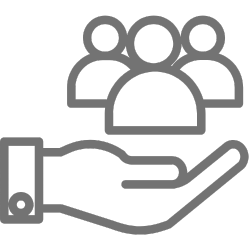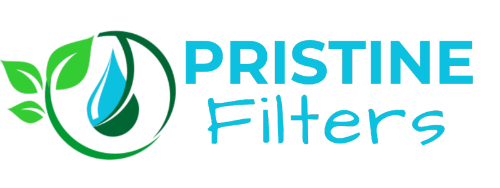Understanding Biohacking
Biohacking merges biology with technology to optimize health and maximize performance, offering unprecedented control over both physical and mental well-being. For many, it's a way to transcend mediocrity—granting full control over one’s biology and pushing the boundaries of human potential.
At its core, biohacking is built on the belief that we can alter both our internal and external environments to enhance our health, performance, and overall well-being. Over the years, it has evolved by integrating ancient wellness practices with cutting-edge scientific discoveries. Today, biohackers employ a wide range of tools and techniques, including:
- Simple dietary adjustments
- Advanced technological implants
- Exercise and physical activity
- Meditation and mindfulness
- Sleep optimization
- Supplementation with vitamins and minerals
- Cold exposure and heat therapy
- Light therapy
- Genetic testing and personalized medicine
The aging process, heavily influenced by technology, enables biohackers to monitor various health metrics in real-time, fine-tuning their lifestyles based on the data.
Biohacking isn't limited to scientists; it’s practiced by people from all walks of life who adopt a scientific approach to refining their health routines. The field spans from nutritional tweaks to molecular and technological enhancements. To understand biohacking fully, it's essential to explore its various forms and the principles that guide this innovative practice.
The History of Biohacking
Biohacking originated from the DIY biology movement, which encouraged biological experimentation outside traditional lab settings. This grassroots approach gained momentum with the rise of the quantified self-movement in the early 2000s, which emphasized personal data tracking and analysis.
These movements have shaped modern biohacking by combining the curiosity and innovation of amateur scientists with advanced technological tools, paving the way for today’s biohacking explorations.
Key Principles of Biohacking
Biohacking rests on three core principles:
- Self-Experimentation: Testing various health strategies on oneself to observe their effects.
- Personalization: Tailoring approaches to an individual’s unique biology and lifestyle for optimal results.
- Open Science: Promoting the free exchange of information and findings within the biohacking community.
These principles support a culture of open science, making scientific research and experimentation accessible to everyone.
Nutritional Biohacking
Nutritional biohacking uses dietary strategies to boost cellular metabolism and energy production, leading to better health. Key tactics include the ketogenic diet and intermittent fasting. The ketogenic diet, high in fats and low in carbs, promotes fat burning for sustained energy. Intermittent fasting alternates between eating and fasting periods, enhancing metabolic health and cellular repair.
Certain foods play vital roles in nutritional biohacking. For instance, Coenzyme Q10-rich foods like organ meats and fatty fish are essential for mitochondrial function. Nutrigenomics, the study of how diet affects gene expression, allows for personalized nutrition based on one’s genetic makeup.
A popular biohacking beverage, Bulletproof Coffee, combines organic coffee with MCT oil and butter to enhance satiety and support heart health.
Molecular Biohacking
Molecular biohacking involves using natural and synthetic molecules, such as vitamins, minerals, and peptides, to influence biological functions. Nootropics, or "smart drugs," are key to this practice, enhancing cognitive abilities like wakefulness, mood, memory, creativity, and focus. Over-the-counter nootropics include supplements and foods like creatine and caffeine designed to boost mental performance.
Peptides are another crucial aspect of molecular biohacking. These short amino acid chains aid in cell repair, immune defense, and hormone regulation. Herbal adaptogens can also help the body manage stress by influencing stress-related hormones, while L-theanine supplements promote relaxation by modulating neurotransmitters.
Technological Biohacking
Technological biohacking leverages wearable devices and implants to collect data and enhance human capabilities. Smartwatches and fitness trackers are commonly used to monitor physical activity, heart rate, sleep patterns, and other health metrics. This real-time data helps optimize health and performance by setting fitness goals and tracking progress.
More advanced biohacks involve implanted devices and body modifications. For instance, some biohackers in the grinder movement implant microchips or magnets to enhance physical abilities or senses. These implants can store passwords, act as electronic keys, and collect detailed biological data. While these innovations offer exciting possibilities, they also raise ethical and safety concerns.
Beginner's Guide to Biohacking
Newcomers to biohacking can make significant improvements to their well-being by starting with basic lifestyle changes. Biohacking views the body holistically, recognizing that what we consume and how we interact with our environment—through diet and sensory inputs—profoundly affects our health and behavior.
A popular method is the Bulletproof Diet, which suggests:
- Pairing vegetables with butter from grass-fed cows
- Consuming beef from grass-fed sources
- Choosing free-range eggs
- Eating low-mercury fish
Biohackers should avoid sugar and identify personal food intolerances to reduce inflammation and enhance cognitive function, thereby protecting against metabolic and neurological disorders.
Designing exercise routines that suit individual fitness levels and preferences ensures consistency while minimizing injury risk. Recommended activities include:
- Spending 10 minutes daily on foam rolling exercises to restore mobility and prevent muscle stiffness.
- Maintaining a neutral spine posture when sitting, such as sitting cross-legged or squatting in your seat.
- Listening to instrumental music during tasks to enhance focus by influencing brainwave patterns.
Three Immediate Hacks to Improve Your Health
For those eager to start biohacking, here are three simple but effective health hacks: drinking hydrogen water, practicing breathwork, and incorporating mitochondria-supporting foods into your diet.
Hydrogen Water
Hydrogen water is rich in antioxidants, which help reduce inflammation and support overall wellness. By neutralizing harmful free radicals, it promotes cellular health and strengthens the body’s natural healing processes. Adding hydrogen water to your daily routine is an easy way to start improving your health.
Breathwork
Breathwork exercises are powerful tools for regulating the nervous system, leading to increased mental clarity and relaxation. Techniques like box breathing and alternate nostril breathing have been shown to reduce stress and enhance well-being. Regular breathwork practice can help you better manage your emotional and mental states.
Mitochondria-Supporting Foods
Incorporating foods that support mitochondrial function can boost cellular energy production and overall health. Examples of such foods include:
- Olive oil
- Red wine
- Berries
- Leafy greens
- Nuts and seeds
- Fatty fish
- Avocado
- Dark chocolate
A diet rich in antioxidants, essential vitamins, minerals, and healthy fats promotes cellular repair and energy production, improving energy levels and metabolic health.
Advanced Biohacking Techniques
For those looking to take their biohacking to the next level, consider exploring advanced strategies such as:
- Cold plunges
- Red light therapy
- Intermittent fasting
- Whole-body vibration therapy
These techniques can significantly enhance physical and mental performance by promoting recovery, supporting cellular repair, and improving overall well-being.
Cold Plunges
Cold plunges, a form of cold water therapy, are effective for accelerating athletic recovery, reducing muscle soreness, and boosting the body’s healing process. They can also increase metabolic rate, strengthen immune response, and improve sleep quality. Regular cold plunges have been shown to elevate endorphin levels, naturally enhancing mood and reducing stress.
Red Light Therapy
Red light therapy, or photobiomodulation, uses low-level red or near-infrared light wavelengths to promote healing and recovery. It improves cellular function and skin health by reducing inflammation and oxidative stress. This therapy stimulates collagen production, aiding in wound healing and cellular repair.
Intermittent Fasting
Intermittent fasting offers numerous health benefits, including:
- Improved metabolic health
- Reduced inflammation
- Enhanced cellular repair
By alternating between eating and fasting periods, intermittent fasting encourages fat burning, increases insulin sensitivity, and supports weight management. This dietary approach can be customized to fit individual lifestyles and preferences, focusing on weight loss and overall health.
Whole-Body Vibration Therapy
Whole-body vibration therapy involves standing on a vibrating platform that stimulates muscle contractions, enhancing strength and flexibility. It improves circulation, reduces muscle soreness, and promotes general well-being. Regular use of this therapy can also increase bone density and support joint health, offering significant benefits for overall fitness.
Measuring the Effectiveness of Biohacks
To optimize health and performance, it’s crucial to assess the effectiveness of biohacks. Tools like wearable devices, blood tests, and self-experimentation are essential for tracking and analyzing the impact of different strategies. By collecting data and carefully reviewing the results, biohackers can refine their methods for better outcomes.
Using Wearable Devices
Fitness trackers and smartwatches monitor various health metrics, such as activity levels, sleep patterns, and vital signs. This real-time data is invaluable for setting fitness goals and optimizing overall health. Athletes who engage in biohacking can track heart rate variability, sleep quality, and reproductive cycles to make informed adjustments to their health routines.
Blood Tests and Biomarkers
Blood tests are critical for evaluating the impact of biohacks on nutrient levels and biological functions. Biohackers use these tests to understand how different diets or supplements affect their health. Comprehensive blood work reveals essential information about:
- Vitamin and mineral levels
- Antioxidant status
- Cellular health
These insights are vital for preventing diseases and supporting heart health, enabling individuals to address potential health issues early on.
Self-Experimentation and Data Analysis
Self-experimentation is the foundation of biohacking, allowing individuals to tailor their interventions to their unique needs. Start by identifying specific health or performance goals, and meticulously track relevant data using journals, apps, and wearable technology. Analyze your data to identify patterns and trends that reveal the effectiveness of your biohacking strategies.






